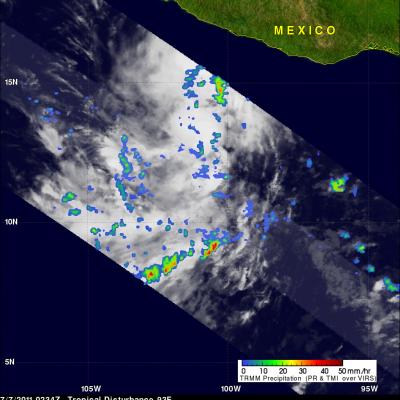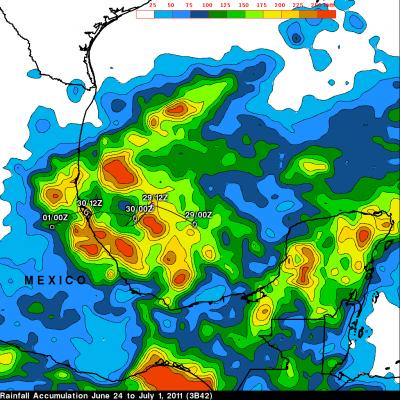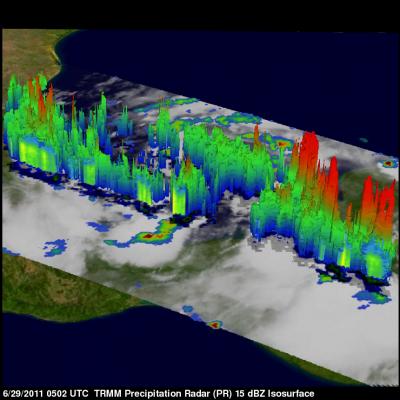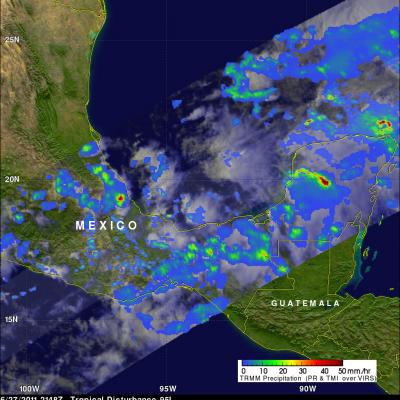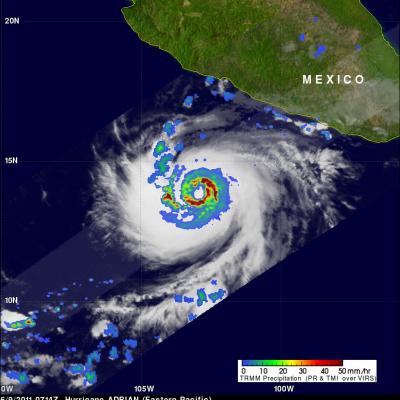TRMM Sees Tropical Depression Forming
The TRMM satellite passed over an area of low pressure in the eastern Pacific Ocean south of Mexico on 7 July 2011 at 0234 UTC. The National Hurricane Center (NHC) in Miami, Florida upgraded this area of low pressure to a tropical depression at 1500 UTC ( 08:00 AM PDT) making it the third tropical depression in the eastern Pacific this hurricane season. Conditions are expected to be favorable for the depression to become a tropical storm within the next couple days. The rainfall analysis from TRMM's Microwave Imager (TMI) and Precipitation Radar (PR) data was overlaid on an infrared image from


